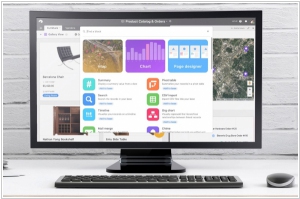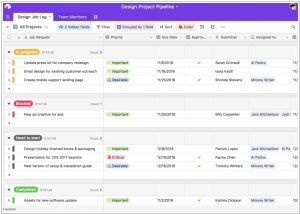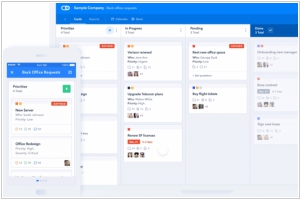Airtable vs Pipefy
June 12, 2023 | Author: Michael Stromann
Airtable and Pipefy are both popular workflow management platforms that offer robust features to streamline and automate business processes. However, there are key differences between the two:
1. Flexibility and Customization: Airtable is known for its flexibility and versatility, allowing users to create custom workflows, databases, and project management solutions. It offers a visual, spreadsheet-like interface that can be adapted to various use cases and industries. Pipefy, on the other hand, is focused on providing pre-built process templates and workflow automation for specific use cases like project management, customer service, and HR. While it offers some customization options, the level of flexibility may be more limited compared to Airtable.
2. Collaboration and Communication: Airtable emphasizes collaboration and communication within teams. It offers features like real-time collaboration, commenting, and file attachments, making it suitable for teams working together on projects. Pipefy also provides collaboration features but is more focused on task management and process automation rather than extensive team collaboration.
3. Process Automation: Pipefy is specifically designed to streamline and automate business processes. It provides a visual workflow builder with automation capabilities to automate repetitive tasks, enforce process compliance, and track progress. Airtable, although it offers automation features through integrations with third-party tools, may require additional setup and configuration to achieve similar levels of process automation.
4. Pricing Model: The pricing models for Airtable and Pipefy differ. Airtable offers a tiered pricing structure based on the number of users and features required, making it more suitable for teams of various sizes. Pipefy, on the other hand, typically follows a per-user, per-month pricing model, which may be more advantageous for smaller teams or organizations with a specific number of users.
See also: Top 10 Business Management software
1. Flexibility and Customization: Airtable is known for its flexibility and versatility, allowing users to create custom workflows, databases, and project management solutions. It offers a visual, spreadsheet-like interface that can be adapted to various use cases and industries. Pipefy, on the other hand, is focused on providing pre-built process templates and workflow automation for specific use cases like project management, customer service, and HR. While it offers some customization options, the level of flexibility may be more limited compared to Airtable.
2. Collaboration and Communication: Airtable emphasizes collaboration and communication within teams. It offers features like real-time collaboration, commenting, and file attachments, making it suitable for teams working together on projects. Pipefy also provides collaboration features but is more focused on task management and process automation rather than extensive team collaboration.
3. Process Automation: Pipefy is specifically designed to streamline and automate business processes. It provides a visual workflow builder with automation capabilities to automate repetitive tasks, enforce process compliance, and track progress. Airtable, although it offers automation features through integrations with third-party tools, may require additional setup and configuration to achieve similar levels of process automation.
4. Pricing Model: The pricing models for Airtable and Pipefy differ. Airtable offers a tiered pricing structure based on the number of users and features required, making it more suitable for teams of various sizes. Pipefy, on the other hand, typically follows a per-user, per-month pricing model, which may be more advantageous for smaller teams or organizations with a specific number of users.
See also: Top 10 Business Management software
Airtable vs Pipefy in our news:
2020. Airtable raises $185M and launches new low-code and automation features

The no-code platform and spreadsheet-centric database, Airtable, has successfully raised $185 million in a Series D funding round. Alongside this milestone, the company is introducing new low-code features, automation capabilities (reminiscent of IFTTT for Airtable), and enhanced data management functionalities. While Airtable's pre-built blocks previously allowed users to incorporate maps, Gantt charts, and other features into their tables, there comes a point where the built-in functionality may not meet all user requirements, necessitating the need for custom tools (referred to as an "escape valve" by Liu, Airtable's CEO). To address this, Airtable has introduced Airtable Apps, enabling more advanced users to build additional functionality using JavaScript. Furthermore, users have the option to share their custom capabilities with others through the newly introduced Airtable Marketplace. These developments empower Airtable users to create more sophisticated and tailored solutions to meet their specific needs.




